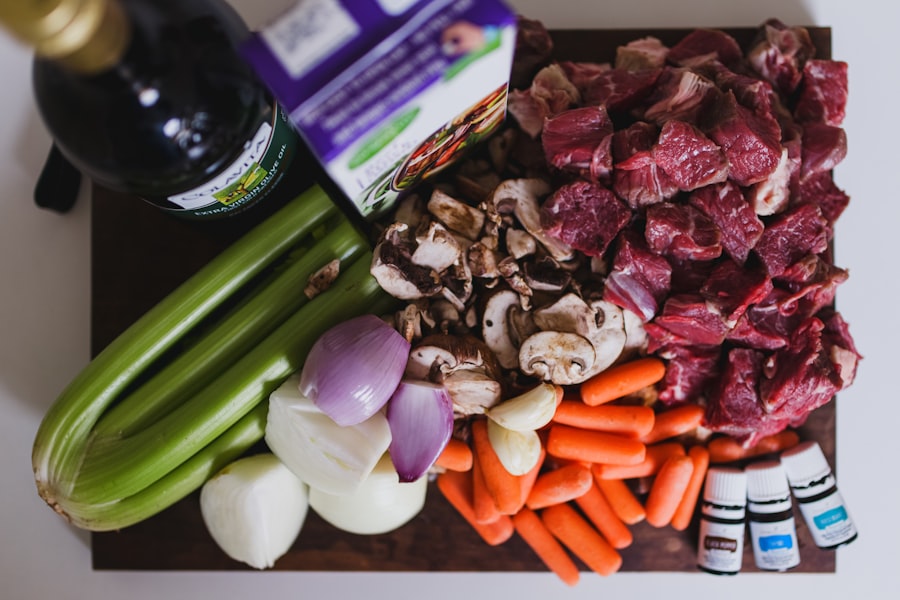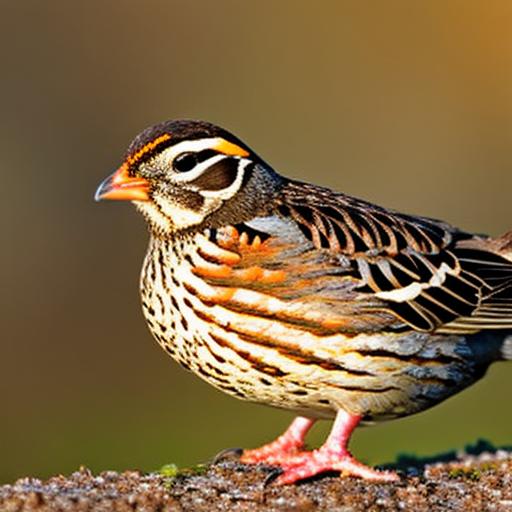Raising quail for meat production has become increasingly popular due to the numerous benefits it offers. Quail meat is not only delicious and nutritious but also a sustainable and cost-effective protein source. Quail are known for their fast growth rate, reaching maturity in just 6-8 weeks, making them an efficient option for meat production. Additionally, quail require minimal space and can be raised in small backyard setups, making them an ideal choice for urban and suburban farmers.
Furthermore, quail are prolific layers, producing a large number of eggs in addition to meat, providing a dual-purpose option for farmers. Quail meat is also highly nutritious, being low in fat and high in protein, making it a healthy choice for consumers. Additionally, quail are known for their high feed conversion ratio, meaning they require less feed to produce a pound of meat compared to other livestock, making them a cost-effective option for meat production. Overall, raising quail for meat offers a sustainable, efficient, and nutritious protein source that is well-suited for small-scale and backyard farmers.
Raising quail for meat production has numerous benefits that make it an attractive option for farmers and consumers alike. Quail are known for their fast growth rate, reaching maturity in just 6-8 weeks, allowing for a quick turnaround in meat production. This makes quail an efficient option for farmers looking to produce meat in a timely manner. Additionally, quail require minimal space and can be raised in small backyard setups, making them an ideal choice for urban and suburban farmers with limited space.
Quail are also prolific layers, producing a large number of eggs in addition to meat, providing a dual-purpose option for farmers. Quail meat is highly nutritious, being low in fat and high in protein, making it a healthy choice for consumers. Furthermore, quail are known for their high feed conversion ratio, meaning they require less feed to produce a pound of meat compared to other livestock, making them a cost-effective option for meat production. Overall, raising quail for meat offers a sustainable, efficient, and nutritious protein source that is well-suited for small-scale and backyard farmers.
Key Takeaways
- Quail meat is a lean and nutritious protein source, high in vitamins and minerals, and low in fat and cholesterol.
- Coturnix quail are the most popular breed for meat production due to their fast growth, high meat-to-bone ratio, and ease of handling.
- Quail require minimal space and can be raised in simple, low-cost housing with proper ventilation and protection from predators.
- A balanced diet of commercial quail feed, supplemented with greens and protein sources, is essential for optimal growth and meat production.
- Good hygiene, proper sanitation, and regular health checks are crucial for preventing diseases and ensuring the overall well-being of meat-producing quail.
Choosing the Right Quail Breeds for Meat Production
When it comes to raising quail for meat production, choosing the right quail breeds is crucial for success. There are several quail breeds that are well-suited for meat production, each with its own unique characteristics and advantages. The Coturnix quail, also known as the Japanese quail, is one of the most popular breeds for meat production due to its fast growth rate and high meat-to-bone ratio. Coturnix quail are known for reaching maturity in just 6-8 weeks and producing tender and flavorful meat, making them an ideal choice for meat production.
Another popular breed for meat production is the Bobwhite quail, which is native to North America. Bobwhite quail are known for their larger size compared to Coturnix quail, making them a suitable choice for those looking for a larger bird for meat production. Additionally, Bobwhite quail are known for their delicious and tender meat, making them a popular choice among farmers and consumers alike. When choosing the right quail breeds for meat production, it’s important to consider factors such as growth rate, meat-to-bone ratio, and overall size to ensure success in meat production.
Choosing the right quail breeds for meat production is essential for success in raising quail for meat. There are several quail breeds that are well-suited for meat production, each with its own unique characteristics and advantages. The Coturnix quail, also known as the Japanese quail, is one of the most popular breeds for meat production due to its fast growth rate and high meat-to-bone ratio. Coturnix quail are known for reaching maturity in just 6-8 weeks and producing tender and flavorful meat, making them an ideal choice for meat production.
Another popular breed for meat production is the Bobwhite quail, which is native to North America. Bobwhite quail are known for their larger size compared to Coturnix quail, making them a suitable choice for those looking for a larger bird for meat production. Additionally, Bobwhite quail are known for their delicious and tender meat, making them a popular choice among farmers and consumers alike. When choosing the right quail breeds for meat production, it’s important to consider factors such as growth rate, meat-to-bone ratio, and overall size to ensure success in meat production.
Housing and Equipment for Raising Quail for Meat
Proper housing and equipment are essential for raising quail for meat production. When it comes to housing, quail require a secure and well-ventilated coop or cage that provides protection from predators and the elements. The coop should be spacious enough to allow the quail to move around comfortably and should be equipped with nesting boxes or areas for egg-laying if dual-purpose production is desired. Additionally, the coop should be easy to clean and maintain to ensure the health and well-being of the quail.
In terms of equipment, feeders and waterers are essential for providing the quail with access to food and water at all times. It’s important to choose feeders and waterers that are suitable for quail and can accommodate their small size. Additionally, heating equipment may be necessary to provide warmth during colder months or in cooler climates. Proper lighting is also important to simulate natural daylight patterns and promote healthy growth and egg production. Overall, providing proper housing and equipment is crucial for creating a comfortable and productive environment for raising quail for meat production.
Proper housing and equipment are essential components of raising quail for meat production. When it comes to housing, quail require a secure and well-ventilated coop or cage that provides protection from predators and the elements. The coop should be spacious enough to allow the quail to move around comfortably and should be equipped with nesting boxes or areas for egg-laying if dual-purpose production is desired. Additionally, the coop should be easy to clean and maintain to ensure the health and well-being of the quail.
In terms of equipment, feeders and waterers are essential for providing the quail with access to food and water at all times. It’s important to choose feeders and waterers that are suitable for quail and can accommodate their small size. Additionally, heating equipment may be necessary to provide warmth during colder months or in cooler climates. Proper lighting is also important to simulate natural daylight patterns and promote healthy growth and egg production. Overall, providing proper housing and equipment is crucial for creating a comfortable and productive environment for raising quail for meat production.
Feeding and Nutrition for Meat-Producing Quail
Feeding and nutrition play a crucial role in raising quail for meat production. A well-balanced diet is essential for promoting healthy growth and development in meat-producing quail. A commercial game bird feed that is specifically formulated for quail is an ideal option as it provides the necessary nutrients and protein levels required for optimal growth and meat production. Additionally, supplementing the diet with fresh greens, fruits, and vegetables can provide added nutrition and variety to the quail’s diet.
It’s important to provide access to clean water at all times as dehydration can have detrimental effects on the health and growth of the quail. Additionally, providing access to grit or small stones is essential as it aids in digestion by helping the quail grind their food in their gizzards. Monitoring the quail’s feed intake and adjusting as needed based on growth rates and seasonal changes is important to ensure they receive adequate nutrition throughout their development. Overall, providing a well-balanced diet and proper nutrition is essential for raising healthy and productive meat-producing quail.
Feeding and nutrition play a crucial role in raising quail for meat production. A well-balanced diet is essential for promoting healthy growth and development in meat-producing quail. A commercial game bird feed that is specifically formulated for quail is an ideal option as it provides the necessary nutrients and protein levels required for optimal growth and meat production. Additionally, supplementing the diet with fresh greens, fruits, and vegetables can provide added nutrition and variety to the quail’s diet.
It’s important to provide access to clean water at all times as dehydration can have detrimental effects on the health and growth of the quail. Additionally, providing access to grit or small stones is essential as it aids in digestion by helping the quail grind their food in their gizzards. Monitoring the quail’s feed intake and adjusting as needed based on growth rates and seasonal changes is important to ensure they receive adequate nutrition throughout their development. Overall, providing a well-balanced diet and proper nutrition is essential for raising healthy and productive meat-producing quail.
Health and Disease Management for Meat-Producing Quail
Maintaining the health of meat-producing quail is essential for successful meat production. Preventative measures such as regular cleaning of the coop or cage, providing clean water at all times, and ensuring proper ventilation can help reduce the risk of disease outbreaks. Additionally, monitoring the quail regularly for signs of illness or distress can help identify potential health issues early on.
It’s important to have a good relationship with a veterinarian who specializes in poultry to provide guidance on preventative health measures such as vaccinations or parasite control. Implementing biosecurity measures such as limiting exposure to wild birds or other poultry can help reduce the risk of disease transmission to the quail flock. Overall, maintaining good health practices and implementing preventative measures are essential for ensuring the well-being of meat-producing quail.
Maintaining the health of meat-producing quail is essential for successful meat production. Preventative measures such as regular cleaning of the coop or cage, providing clean water at all times, and ensuring proper ventilation can help reduce the risk of disease outbreaks. Additionally, monitoring the quail regularly for signs of illness or distress can help identify potential health issues early on.
It’s important to have a good relationship with a veterinarian who specializes in poultry to provide guidance on preventative health measures such as vaccinations or parasite control. Implementing biosecurity measures such as limiting exposure to wild birds or other poultry can help reduce the risk of disease transmission to the quail flock. Overall, maintaining good health practices and implementing preventative measures are essential for ensuring the well-being of meat-producing quail.
Processing and Butchering Quail for Meat

Processing and butchering quail for meat requires careful attention to detail to ensure a high-quality end product. Once the quail have reached maturity, they can be humanely harvested by using methods such as cervical dislocation or using a sharp knife to sever the spinal cord quickly. After harvesting, it’s important to properly chill the carcasses as soon as possible to prevent spoilage.
Butchering involves removing feathers, eviscerating the carcass, and preparing it into desired cuts such as whole birds or individual pieces. Proper sanitation practices should be followed throughout the processing and butchering process to ensure food safety. Once butchered, the quail can be stored in refrigeration or frozen until ready to be cooked and enjoyed.
Processing and butchering quail for meat requires careful attention to detail to ensure a high-quality end product. Once the quail have reached maturity, they can be humanely harvested by using methods such as cervical dislocation or using a sharp knife to sever the spinal cord quickly. After harvesting, it’s important to properly chill the carcasses as soon as possible to prevent spoilage.
Butchering involves removing feathers, eviscerating the carcass, and preparing it into desired cuts such as whole birds or individual pieces. Proper sanitation practices should be followed throughout the processing and butchering process to ensure food safety. Once butchered, the quail can be stored in refrigeration or frozen until ready to be cooked and enjoyed.
Cooking and Enjoying Quail Meat
Quail meat is known for its delicate flavor and tender texture, making it a versatile ingredient that can be enjoyed in various culinary preparations. Whether grilled, roasted, fried, or braised, quail meat lends itself well to a wide range of cooking methods that highlight its natural flavors. Due to its small size, quail cooks quickly which makes it an ideal choice for weeknight dinners or special occasions.
Quail eggs are also highly prized for their rich flavor and can be used in baking or enjoyed on their own as a nutritious snack or appetizer. When cooking with quail meat or eggs, it’s important to handle them with care due to their delicate nature. With its unique flavor profile and versatility in cooking applications, enjoying quail meat is sure to delight even the most discerning palates.
Quail meat is known for its delicate flavor and tender texture, making it a versatile ingredient that can be enjoyed in various culinary preparations. Whether grilled, roasted, fried, or braised, quail meat lends itself well to a wide range of cooking methods that highlight its natural flavors. Due to its small size, quail cooks quickly which makes it an ideal choice for weeknight dinners or special occasions.
Quail eggs are also highly prized for their rich flavor and can be used in baking or enjoyed on their own as a nutritious snack or appetizer. When cooking with quail meat or eggs, it’s important to handle them with care due to their delicate nature. With its unique flavor profile and versatility in cooking applications, enjoying quail meat is sure to delight even the most discerning palates.
Quail meat is also a great source of protein, vitamins, and minerals, making it a healthy choice for any diet. Its small size and tender texture make it a versatile ingredient that can be used in a wide variety of dishes, from salads to stir-fries. Whether grilled, roasted, or pan-seared, quail meat is sure to add a gourmet touch to any meal. Additionally, its lean nature makes it a popular choice for those looking to maintain a healthy lifestyle without sacrificing flavor.
If you’re interested in raising quail for meat, you might also want to consider the housing needs of other poultry. Poultry Wizard has a helpful article on whether turkeys need a coop, which can provide valuable insights into creating suitable living conditions for different types of birds. Check it out here. Understanding the specific requirements for housing various poultry can help ensure the health and well-being of your feathered friends.
FAQs
What are the benefits of keeping quail for meat?
Quail meat is low in fat and high in protein, making it a healthy choice for meat consumption. Quail are also relatively easy to raise and can be kept in small spaces, making them a convenient option for home meat production.
What do quail eat?
Quail are omnivores and can eat a variety of foods including seeds, insects, and small plants. Commercially available quail feed is also available and can provide a balanced diet for quail being raised for meat.
How long does it take to raise quail for meat?
Quail can reach maturity in as little as 6-8 weeks, making them a relatively quick option for meat production compared to other poultry such as chickens or turkeys.
How much space do quail need?
Quail can be raised in relatively small spaces, with each bird requiring only a few square feet of space. This makes them a good option for backyard or urban meat production.
What are the housing requirements for quail?
Quail can be housed in simple cages or hutches, with bedding material such as straw or wood shavings. They also require protection from predators and the elements, so a secure and sheltered housing is necessary.
Are there any special considerations for raising quail for meat?
Quail are generally hardy birds, but they do require a balanced diet, clean water, and protection from predators. Additionally, proper handling and processing techniques are important for ensuring the quality and safety of the meat.
Meet Walter, the feathered-friend fanatic of Florida! Nestled in the sunshine state, Walter struts through life with his feathered companions, clucking his way to happiness. With a coop that’s fancier than a five-star hotel, he’s the Don Juan of the chicken world. When he’s not teaching his hens to do the cha-cha, you’ll find him in a heated debate with his prized rooster, Sir Clucks-a-Lot. Walter’s poultry passion is no yolk; he’s the sunny-side-up guy you never knew you needed in your flock of friends!







